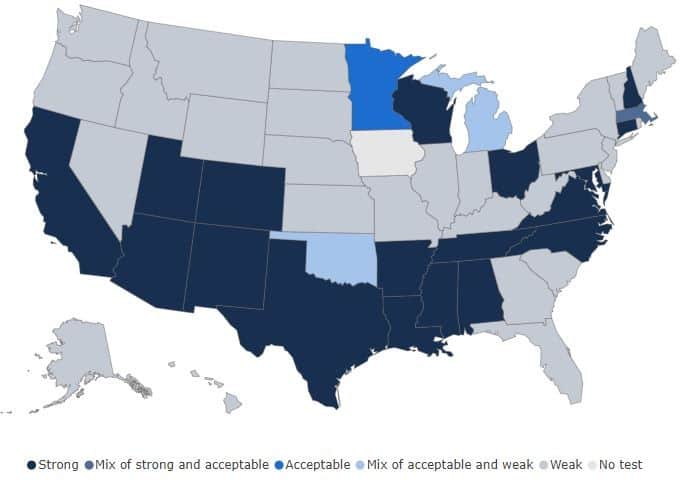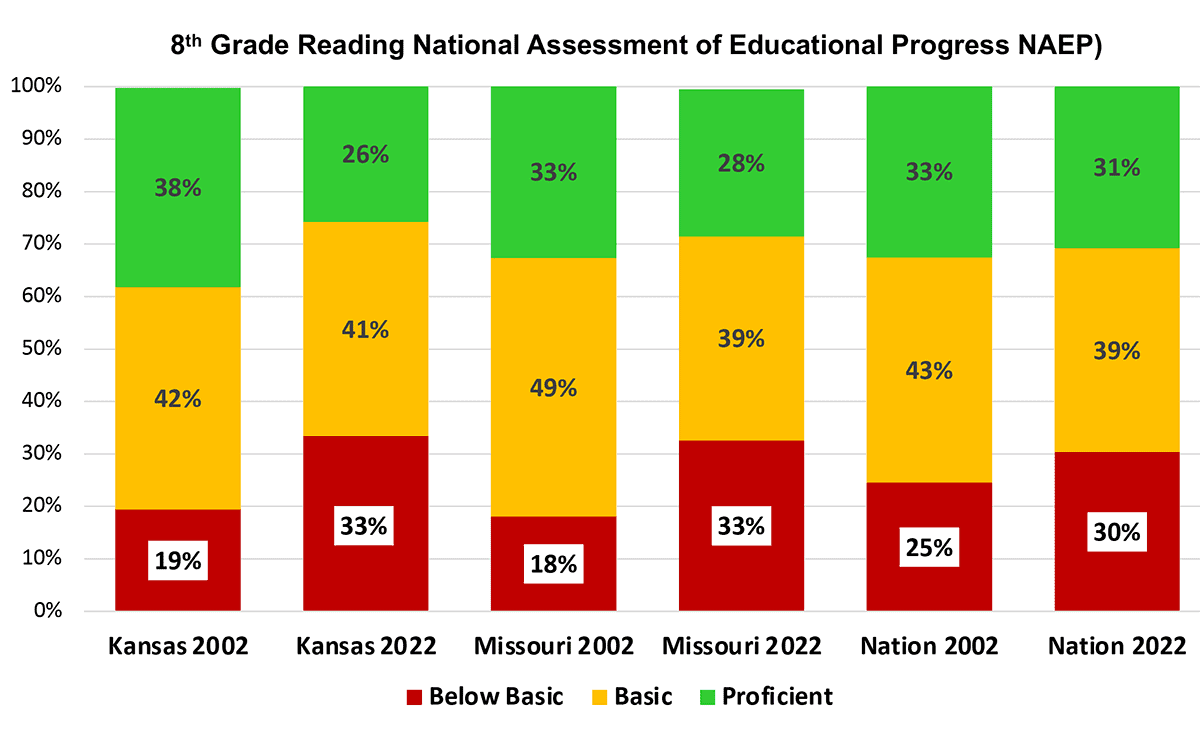(The Sentinel) — A new study by the National Council on Teacher Quality is casting doubts on the teacher licensure tests in many states — including Kansas — saying the tests don’t show that elementary teachers adequately understand reading instruction.
According to the report, more than half of states use a weak teacher licensure test that fails to adequately measure elementary teachers’ knowledge of scientifically-based reading instruction. “This shortcoming means that annually, nearly 100,000 elementary teachers across the country enter classrooms with false assurances that they’re ready to teach reading, and the districts that hire them have false assurances that those teachers are adequately prepared,” the report reads.

Indeed, as the Sentinel has previously reported, 34% of students (average of Grades 4 and 8) in the United States cannot read at the basic level, according to the National Center for Education Statistics.
Dr. David Hurford, director of the Center for Research, Evaluation and Awareness of Dyslexia — or READing — at Pittsburg State University in Pittsburg, Kansas, runs a nationally-recognized program that teaches dyslexic children and adults to read. Hurford says this is a situation that should not only be unacceptable but doesn’t have to happen.
“Thirty-four percent of our nation’s children are not reading at the basic level,” Hurford said. “The National Center for Education Statistics defines reading at the basic level as ‘partial mastery of fundamental skills.’ Not reading at the basic level then indicates that the student does not have a ‘partial mastery of fundamental skills,’ which is sad.”
It is not just students who are struggling, Hurford said.
“There are approximately 93 million adults who cannot read well enough to take their prescription medication,” he said. “The illiteracy rate of adults is simply an outgrowth of poor reading instruction while in school.”
In Kansas, the numbers are falling and even worse than the national average, with 40% of fourth graders below the basic level and only 30% proficient. Eighth-grade results dropped precipitously over the last 20 years, going from 19% Below Basic to 33%, while proficiency fell from 38% to 26%.

“Every child in Kansas deserves great reading instruction, but far too many aren’t receiving it,” NCTQ President Heather Peske said. “As part of a comprehensive strategy to improve reading instruction, Kansas education leaders can help ensure teachers are prepared to teach reading effectively by requiring stronger licensure tests.”
The teacher licensure report backs up that assertion.
“The data does not reflect any failure by these students; rather, these low literacy rates are because we are not giving students access to teachers with the skills and knowledge to teach reading,” the report reads. “Of the 25 different tests that states use to assess elementary teachers’ knowledge of reading, our analysis identified just ten acceptable tests currently in use across the country — only six of which are strong measures of aspiring teachers’ knowledge of reading instruction.”
NCTQ categorized reading licensure tests into four categories:
- Strong tests go beyond the criteria to be considered acceptable (described below). Tests designated as strong also assess an average of at least 75% of the topics identified within each component, in addition to addressing how to support struggling readers and English learners, as well as either speakers of English language varieties or advanced readers (or both).
- Acceptable tests address at least half of all topics identified within each of the five components (phonemic awareness, phonics, fluency, vocabulary, and comprehension), do not combine reading with other subjects (e.g., math or science) and include few practices contrary to the research.
- Weak tests either address less than half of the topics in one or more components, combine reading with one or more other subjects (e.g., math or science), or include four or more practices contrary to the research (without clearly identifying that these are undesirable teaching practices).
- Unacceptable tests cover none of the topics in one or more components or do not cover all five components adequately and also include four or more contrary practices.
While none of the teacher licensure tests were identified as unacceptable, 15 of them — the majority — were considered weak.
“These weak tests include the most commonly used Praxis Elementary Education: Multiple Subjects (5001) test used in 16 states, as well as the increasingly common Praxis Elementary Education: Content Knowledge for Teaching (7811) test used in seven states,” the report states.
Kansas is among the 28 states considered weak in this area, using the Praxis Elementary Education: Content Knowledge for Teaching (7811), Reading and Language Arts – CKT (7812) subtest.
NCTQ recommends states transition to a stronger teacher licensure test and require a strong reading test for elementary teachers.
“As we state in our latest report,” Peske said, “‘States select and approve the tests that their teachers must pass for licensure. While requiring a stronger test or removing weaker test options may require some effort, doing so will likely lead to better reading instruction in elementary classrooms across the state.’”

